The use of Wi-Fi Dash Camera is increasing rapidly these days. The reason behind is that flexibility and convenience are offered to the Wi-Fi dash cameras’ users. This allows the users to connect their smartphones with the dash camera.
You can easily connect both the devices together and download videos directly to your smartphone. You can send the videos to some other person and use it as evidence also. This Wi-Fi Dash Camera Guide will give you detailed information regarding how to install it and use it properly.
Table of Contents
How to Install Wi-Fi Dash Cam?
Before installing a dash camera, you have to acquire the detailed information about the Wi-Fi dash camera. It is a quite difficult task and you might have to take the help of experienced individuals. In case, you want to do it by yourself, then you have to read the instructions and follow the steps properly. Here are the simple steps you can follow to get the desired results:
Step 1 Decide The Position For The Dash Cam
The first step is to decide the position for the dash cam in your car. First of all, buy a Wi-Fi dash camera which is suitable and match your requirements. A large variety of dash cameras are available providing different features. After buying, you have to begin the installation process. Initially, you have to decide on the position where you want to fit the dash camera.
You can try different positions by sitting on the driver’s seat and can check each angle. You can make a decision on the basis of it. But it is better to place the device within the reach of your arms. However, it is important to remember that it has to be placed at a position that doesn’t disturb your vision while driving. Remain cautious while choosing the position.
Step 2 Find The Vehicle’s Fuse Box
In this step, you have to search for the fuse box in your vehicle. This step is needed because the power cable of the dash camera will be attached to the vehicle’s fuse box only. It is necessary to find out the location of the fuse box. You will find the fuse box at the bottom of the dashboard either at the driver’s side or passenger’s side. You can also refer to the instructions manual for finding the fuse box in your specific car model.
Step 3 Start Routing The Power Cable
After finding the fuse box, you have to begin routing the power cable in your car. You can first run the cable roughly around the car or through the interior parts behind which the cable will be hidden. This provides you with an idea of how the cable will run during the installation process and the margin to vacate while taking it down to the fuse box.
You can start routing the power cable by passing it through the headliner first and then heading towards to the fuse box. You can run the cable through the gap present in the A-pillar.
You can even remove the A-pillar cover to make this task easier and quicker. You can also refer to the instructions manual for the details about the interior parts of the car or take the advice of a professional.
But it is better to not to remove this A-pillar cover. Then, you can move the cable alongside the wires in the A-pillar. Finally, you have to take the power cable down towards the fuse box.
Step 4 Locate The ‘Hot-In-Start’ Fuse And Install The Power Cable
The fourth step is to find the ‘hot-in-start’ fuse in the fuse box. You have to find this fuse because it will help in the automatic start of the Wi-Fi dash camera whenever the vehicle starts running. Also, it will facilitate the turning off of the dash camera when the vehicle is off or not running. You can easily locate the ‘hot-in-start fuse’ by using the circuit tester. It illuminates when it finds the fuse of such kind. In that fuse, you have to connect the add-a-circuit kit.
To install the power cable, you have to remove the fuse identified above. You can use a fuse puller for this purpose. You have to install this fuse into the installation kit’s circuit. After installing the fuse into the circuit, plug it into the ‘hot-in-start’ place from where you removed the fuse.
Step 5 Search For The Ground Point
When you are done with the installation of the one end of the cable, you have to proceed for the other end. The other end of the installation kit must be grounded to the vehicle. You will find the ground point near to the fuse box only. You need to just remove the bolt and attach the ground lug from the installation kit to the point.
Step 6 Fix The Installed Power Cable And Test The Installation
In the last step, you have to fix the wiring of the power cable. First of all, you have to make use of the zip tie and bind the excess wires together. Then, you have to ensure that the wiring remains safe and not affected while driving or sitting on the seat. You can do this by using more zip ties and fixing it to a solid mounting point bottom to the dashboard. Make
Now, it is the time to check whether the Wi-Fi dash camera is working or not. You have to make sure that the installation process is properly done. You have to just insert the key and start the car. In case, everything is accurate and correct, the dash camera will start recording. If it is not working, then you can check the things again and take the help of another person or a professional. Finally, you have to fix the interior parts, which you removed during the process, at their original positions.
How to Use Wi-Fi Dash Cam Properly?
Wi-Fi dash camera has various benefits and offers several features. You can easily view the videos and download them in your smartphones. This device is flexible and allows the users to use it in the moving car.
You can send the downloaded videos to some other person too. You will get a mobile app along with the Wi-Fi dash camera. The manufacturer provides the same to the user. You can download that app from the Google Play Store or Apple Store. The app can work both for Android and iOS mobiles.
The most popular Wi-Fi dash cameras are the Roadrover and the Rexing dash cam. You can prefer to buy the dash cam of any of the one brand. You can also avail the apps and connect them with the dash cam in the moving car. In this connection process, you don’t have to pay anything. There is no need to use your mobile data or other charges. You can easily operate the dash cam and the app, once they are connected through the Wi-Fi.
You have to connect the app installed in your smartphone to the Wi-Fi-enabled dash cam. You can follow these quick steps and use this device properly:
Step 1
First of all, you have to ensure that you are present inside the vehicle before beginning the process. This is because of the simple reason that the Wi-Fi has to be within the range of 5 meters of the dash cam to enable a strong signal to your smartphone.
Step 2
In this step, you have to switch on the Dash Cam to start using it. This will enable the dash cam to send out its Wi-Fi signals to the smartphone. In case, the dash cam is not active, the Wi-Fi signal won’t work. You will also notice that the dash cams work only when you are driving the car. It means that the Wi-Fi functions only when the car is moving and not when it is standing still in the parking. It is necessary to ensure that the dash cam is in the driving mode and not parking mode when connecting to the Wi-Fi.
Step 3
You have to close all the other Wi-Fi connections in your smartphone before connecting to the dash cam. In short, you have to either cancel or forget all the existing Wi-Fi connections and after only, you have to connect with the dash cam. The reason is that the smartphone is able to connect with a single Wi-Fi at a time. Also, using two Wi-Fi at the same time may interrupt the connections. This will result in dropouts or several connection problems. So, it is better to disable all the existing connections before connecting to the Wi-Fi enabled Dash Camera.
Step 4
Lastly for using the Wi-Fi dash cam properly, you have to know a feature and ensure it is not working. This feature is a setting option on your smartphone. You have to turn off the “Smart Network Switch or Adaptive Wi-Fi” in Android or the “Wi-Fi Assist” in iOS. The function of this feature is to maintain stability in the internet connection on your phone. This feature also makes use of mobile data.
In case, the Wi-Fi connection is weak or has fluctuations, then it automatically switches to the mobile data. This provides a stable internet connection. If you are connected with the Dash Cam Wi-Fi, then also it makes use of the mobile data.
It leads to disruptions in the Wi-Fi connection and results in the dropout of the Dash Cam app. So, to prevent this situation and use it properly, you have to switch off this feature in your smartphone and then only connect to the Dash Cam Wi-Fi.
Connecting Wi-Fi to Dash Cam in Moving Car
When you are done with installing the Wi-Fi Dash Cam in your car and knowing how to use it properly, the last thing you have to do is to connect the device in the moving car. As you understand that the device doesn’t work in the parking mode, so you have to connect it in the driving mode only. The process of connecting Wi-Fi to Dash Cam is not a difficult task. You can easily do this with the help of proper instructions. Here are a few steps which you can follow to connect the smartphone’s Wi-Fi to Dash Cam:
Step 1
First of all, you have to search for the ‘Personal Hotspot’ option on your mobile. It is usually available in the network or internet settings. You have to note the SSID (network name) and password from the personal hotspot settings. Be careful while noting both of the details.
Step 2
Download the required app from Google Play Store or iOS store. Then, you have to visit the Cloud Hotspot Settings of the Dash Cam through the app.
Step 3
Enter the SSID and password details of your personal hotspot. You have to manually type both of the details in it.
Step 4
After these steps, you have to click on the OK option. It will also ask you whether to ‘Save and Close’ or ‘Quit without Saving’. You have to choose the ‘Save and Close’ option. The new settings will be saved. Also, your dash camera will reboot.
Step 5
Finally, you have to go to the cloud menu in the app. The camera will be automatically connected to your smartphone. In your phone, it will show that a device is connected to the dash cam. The camera’s icon will turn blue and indicate that the camera has started working.
Final Thought
Wi-Fi Dash Camera is a modern device that facilitates several benefits to the users. The features of downloading the video and sending it to another person are helpful in case of any accidents or criminal investigations. Using it is also a simple task and does not require any prior knowledge. You just need to know the pros and cons of your dash camera.
Only at the time of installation, there is a need to follow the instructions and steps properly. You can follow this quick Wi-Fi Dash Camera guide and get the best results while using this device.

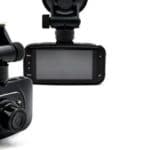
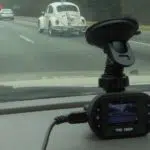
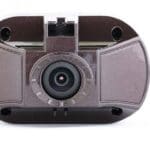
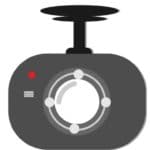
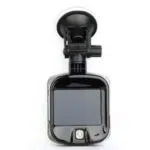
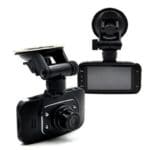
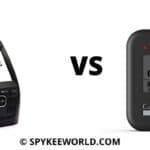
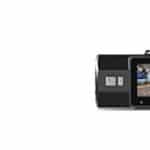
Leave a Reply